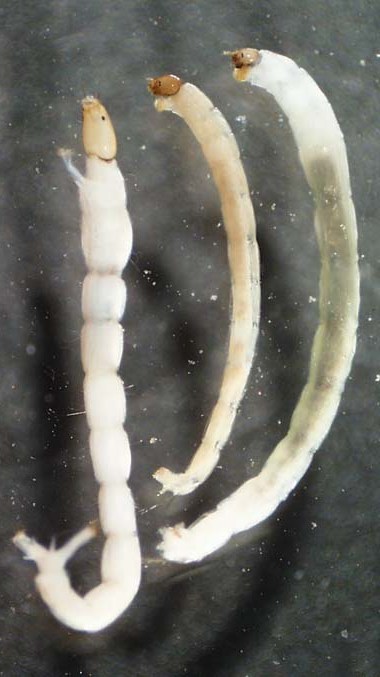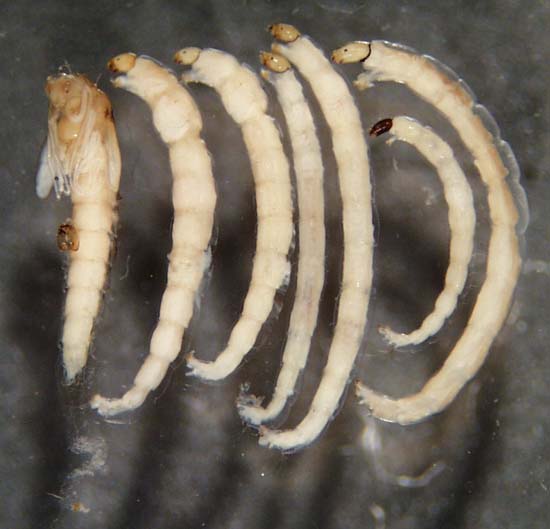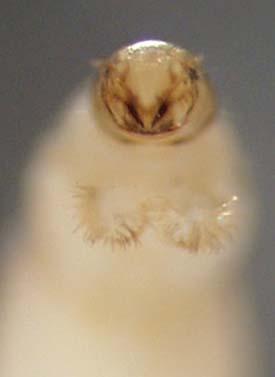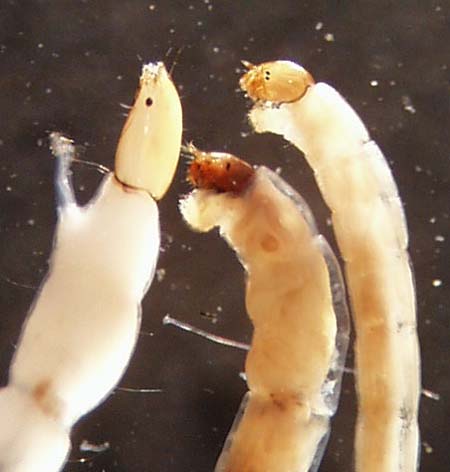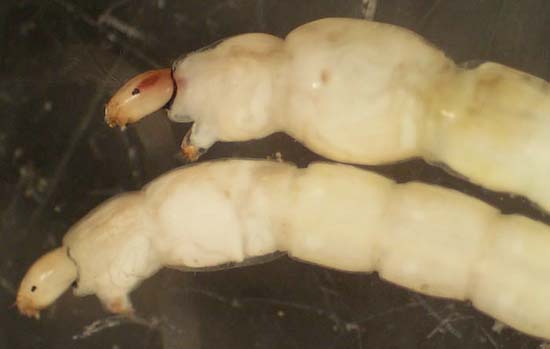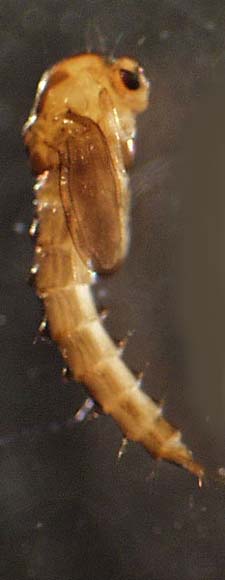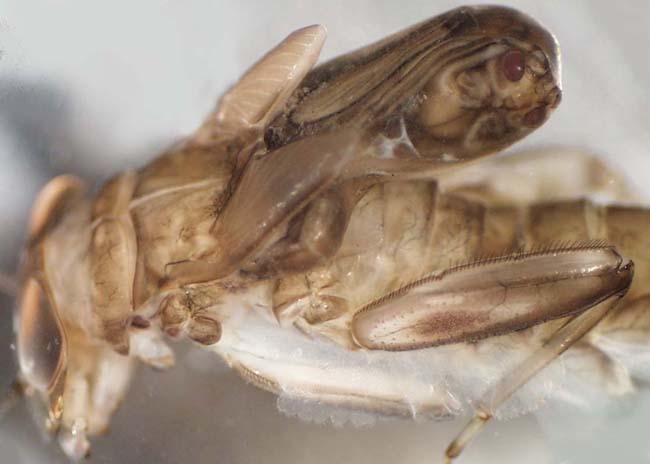
THE XERCES SOCIETY FOR INVERTEBRATE CONSERVATION Aquatic Invertebrates in Pacific Northwest Freshwater Wetlands |
| Identify taxa |
Chironomidae (midges) |
Midges are one of the most important and diverse aquatic insect families, and are present in almost every aquatic habitat. Chironomids typically comprise up to half of the species richness in aquatic systems. Both larvae and pupae are commonly found in wetland samples. Midges are an important component of the diet of fish, amphibians, and other insects. They are also valuable to bio-monitoring efforts because they are good indicators of water quality. Tolerance to pollution varies throughout the family; they have a rapid life cycle, so populations of sensitive taxa respond quickly to degradation. Midge larvae are generally worm-like, with long slender bodies and a well-developed head capsule. They have 2 sets of prolegs--one pair on the first thoracic segment and one pair on the last abdominal segment. They are are difficult to identify to genus or species, and identification to this level requires a microscope to view their have a wide diversity of head morphology. There are images on this page of several different chironomid species. |
Size: small to medium Identifying feature(s): abundant and very diverse; one pair of prolegs on thorax and one pair on last abdominal segment Habitat: all aquatic habitats Tolerance to pollutants: varies from highly tolerant to highly sensitive |
 |
|
© 2007 Xerces Society
Contact info@xerces.org

